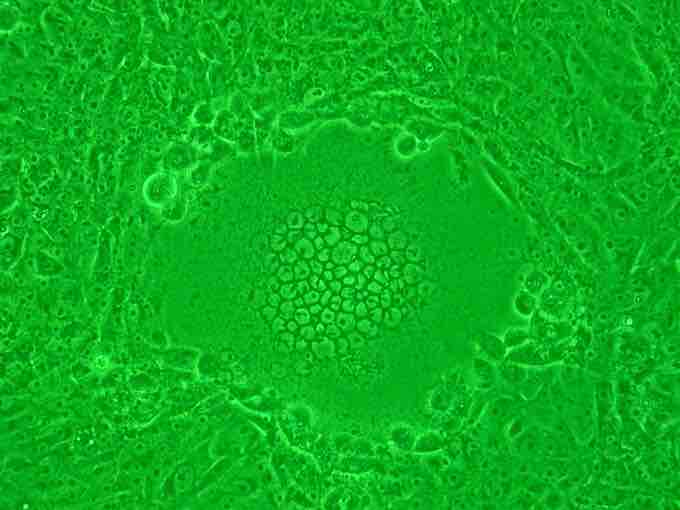Respiratory Syncytial Virus Infection
Human respiratory syncytial virus (RSV) is a virus that causes respiratory tract infections. It is a major cause of lower respiratory tract infections and hospital visits during infancy and childhood. A prophylactic medication (not a vaccine) exists for preterm-birth (under 35 weeks gestation) infants, and for infants with a congenital heart defect or bronchopulmonary dysplasia. Of those infected with RSV, 2–3% will develop bronchiolitis, necessitating hospitalization.
RSV is a negative-sense, single-stranded RNA virus of the family Paramyxoviridae, which includes common respiratory viruses such as those causing measles and mumps. RSV is a member of the paramyxovirus subfamily Pneumovirinae. RSV has ten genes encoding 11 proteins. There are two open reading frames of M2. NS1 and NS2 inhibit type I interferon activity. N encodes the nucleocapsid protein that associates with the genomic RNA forming the nucleocapsid. M encodes the matrix protein required for viral assembly. SH, G and F form the viral coat. The G protein is a surface protein; it functions as the attachment protein, the protein which attaches the virus to target cells. The F protein is another important surface protein. RSV's name comes from the fact that F proteins on the surface of the virus cause the cell membranes on nearby cells to merge, forming syncytia .

Syncytium
The mass or "ball" of cells in the middle of the image are a syncytium of cells that formed due to infection by the HIV virus.
Syncytia are aggregates of cells that can form when cells are infected with certain types of viruses, notably HIV and paramyxoviruses such as RSV. During infection, viral fusion proteins used by the virus to enter the cell are transported to the cell surface where they can cause the host cell membrane to fuse with neighboring cells. This presumably works to the virus's advantage, as aggregates of target cells provide more hosts for the virus to infect and multiply. F proteins also mediate viral fusion, allowing entry of the virus into the cell cytoplasm and also allowing the formation of syncytia. Antibodies directed at the F protein are neutralizing. M2 is the second matrix protein required for viral transcription; it encodes M2-1 (elongation factor) and M2-2 (transcription regulation), while L encodes the RNA polymerase. The phosphoprotein P is a cofactor for L. The genome is transcribed sequentially from NS1 to L with reduction in expression levels along its length.
Treatment of RSV is limited to supportive care, including oxygen therapy. Studies of nebulized hypertonic saline (HS) have shown that the "use of nebulized 3% HS is a safe, inexpensive, and effective treatment for infants hospitalized with moderately severe viral bronchiolitis" where "RSV accounts for the majority of viral bronchiolitis cases. " Supportive care includes fluids and oxygen until the illness runs its course. Increased airflow, humidified and delivered via nasal cannula, may be supplied in order to reduce the effort required for respiration.